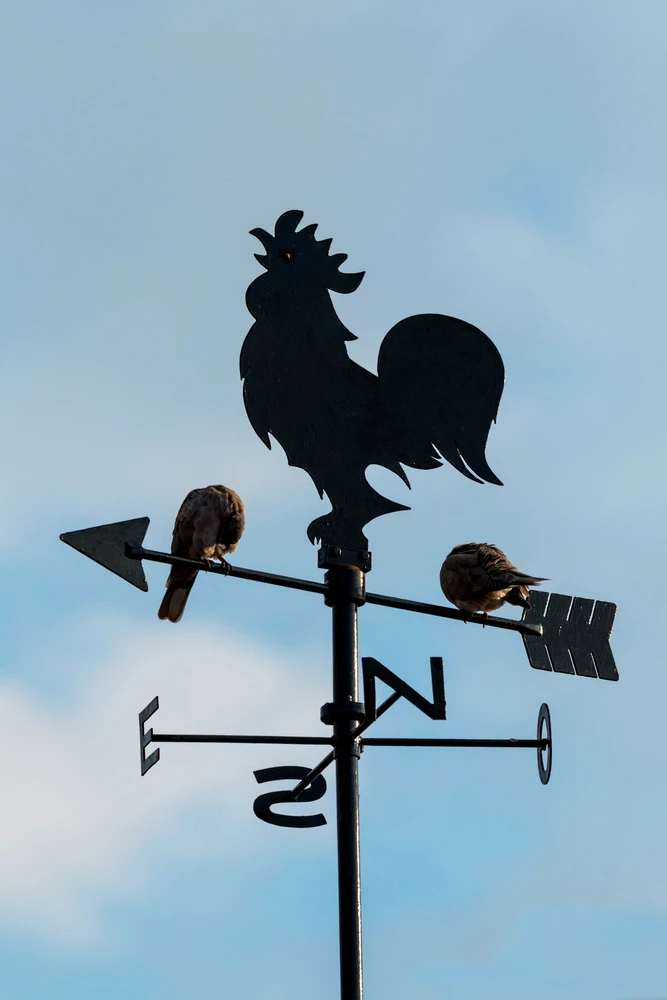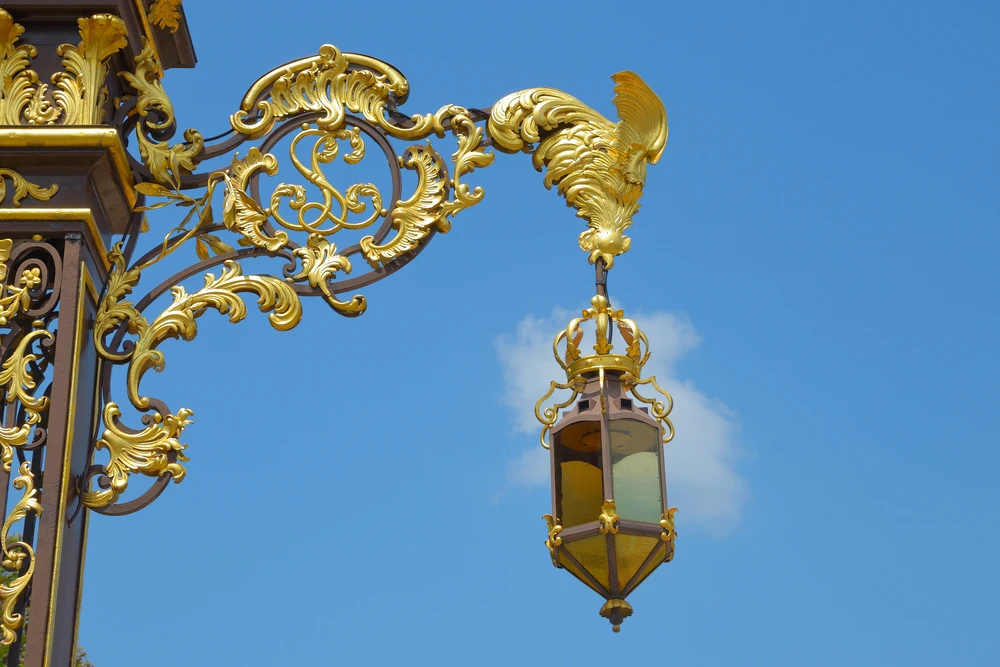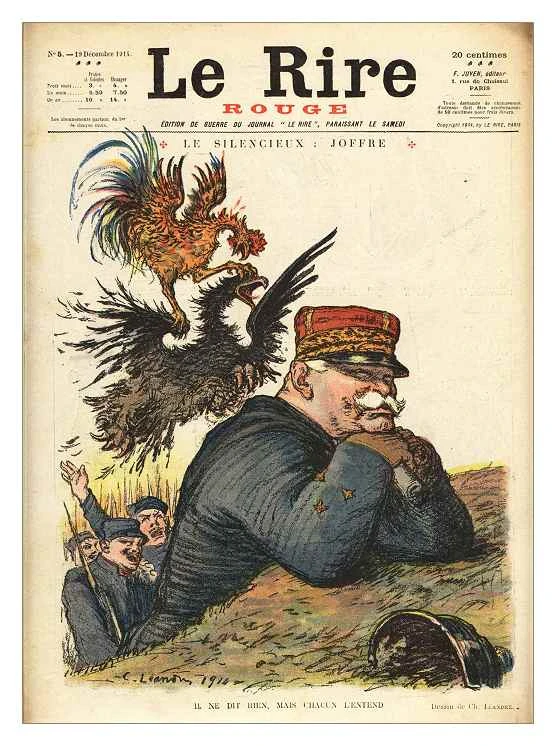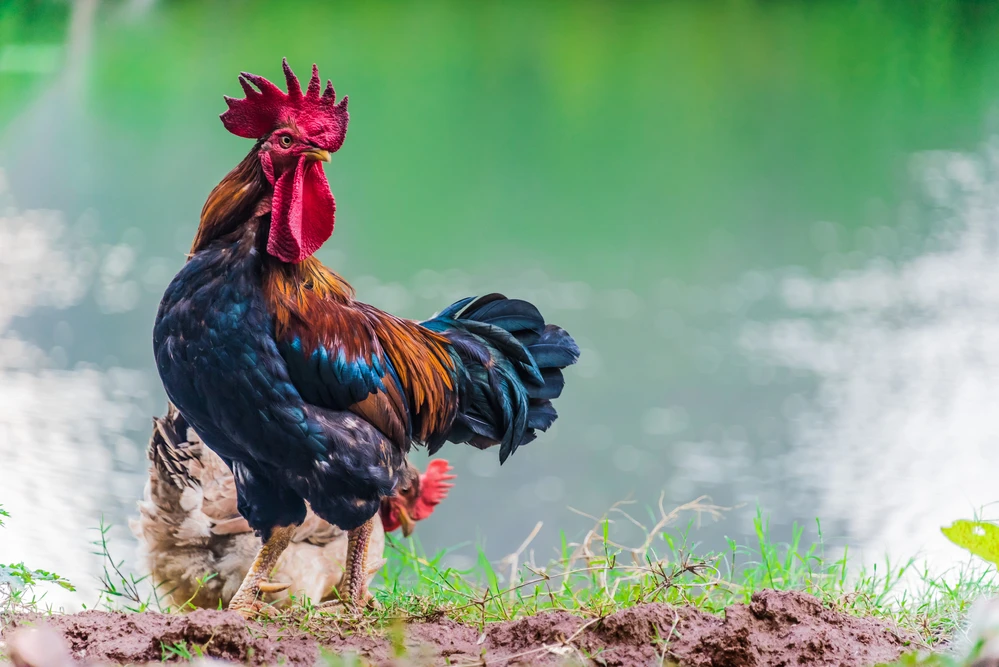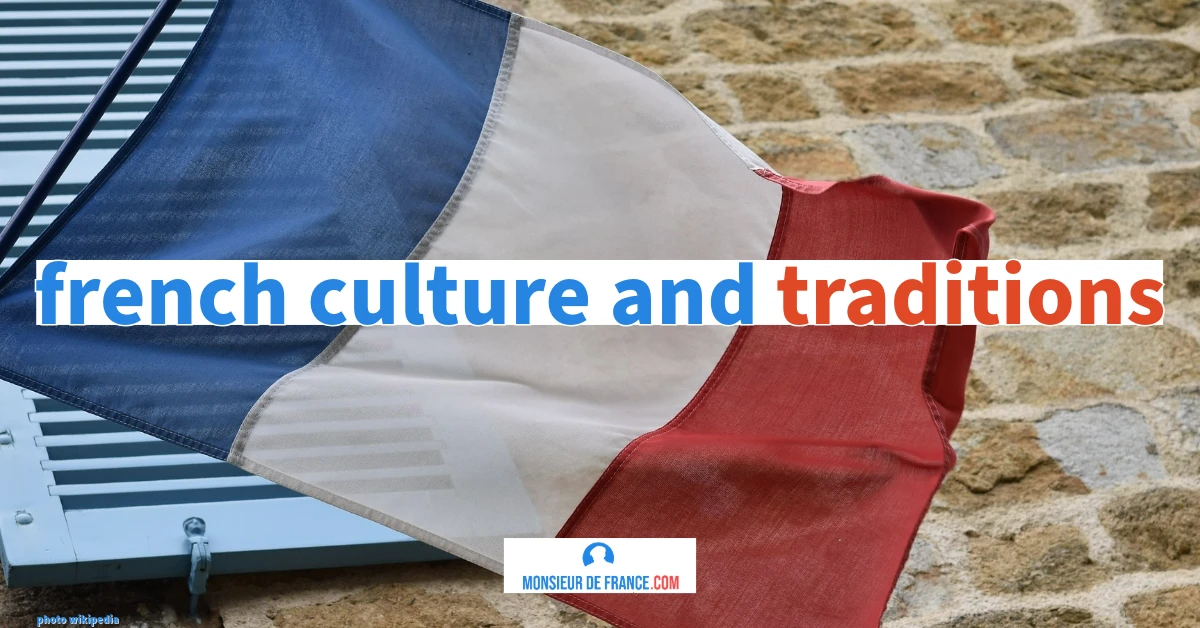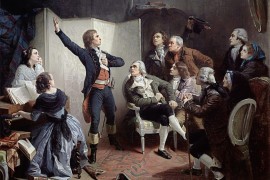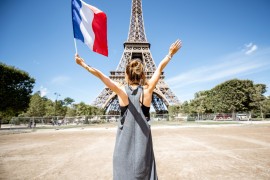The Gallic rooster: perhaps the oldest French symbol
A play on words at the origin
In Latin, Gallus means rooster... And the Gallic. The Romans did not need more to symbolize the Gauls with the rooster. We find many Gallic coins which display this rooster. A rather amusing legend tells that Vercingetorix, chief of the Gauls, would have sent a rooster to Caesar's camp before a battle to symbolize the strength of his warriors and that Caesar would have had the rooster killed and cooked before sending it back to the sender to show him what he would do with the famous Gallic warriors...
On top of the churches from the Middle Ages.
A rooster on the weathervane of the top of a bell tower. Photo chosen by monsieurdefrance.com: digoarpi/ dépositphotos
In the Middle Ages, the rooster was rather badly seen. It was considered immodest, libidinous, since it climbed on the hens in front of everyone. But a pope, Leo IV, considered it in a different light and made it the herald of the day, thus of the Light, thus of Christ. It is to him that we owe the idea of placing a rooster at the top of the bell towers. A tradition that has remained very much alive in France. You can't see a church without a rooster at the top of the bell tower (under the lightning rod, and often forming a weather vane).
It becomes a symbol of France.
Since the Renaissance, the rooster is back in fashion and it is appreciated in decoration, especially by the kings of France. Louis XIV honored it in the "French style", a style intended to complement the usual Greek styles (Doric, Corinthian ...). It appears in the middle of palms at the top of columns. In the 18th century, it was already a French symbol since it appears on the Place Stanislas in Nancy, created in 1755 and dedicated to France. On the facades, roosters hold the reverberations. They symbolize the "Gallic vigilance" and thus French.
The Revolution brings it to light
While the French Revolution erased the lilies of the kings of France from 1792, the rooster is more and more highlighted. It appears on the official seal of the Directory at the end of the 17th century. It was even proposed as a symbol to Napoleon who refused saying "the rooster has no strength" and chose the bees to symbolize "the industrious France".
The rooster, symbol of the French vigilance, on the Place Stanislas of Nancy. Photo chosen by Monsieurdefrance.com: oissonenciel/depositphotos.
Consecrated by the war of 1870.
It is the war of 1870, which sees France confronting Prussia and the German states, which makes the cockerel the symbol of France. It is opposed to the Prussian eagle, considered barbaric. The IIIrd Republic (1871-1939) made him appear on its gold coins and even on the gate of the Rooster which leads to the gardens of the Presidency of the Republic at the Elysée Palace. We see him crushing Germany in 1914 and calling for the financing of the Loan for the war. At the end of the conflict, when the war memorials were being erected, dedicated to the soldiers who fell at the Front between 1914 and 1918,many communes chose to put a rooster at the top of their war memorial .
Behind General Joffre, the Gallic Rooster pounces on the Prussian eagle. Illustration chosen by monsieurdefrance.com: Charles Léandre / Wikipedia common
Sport is also involved
It is therefore quite natural, because it is already a great symbol for the French, that the rooster is installed on the jerseys of national teams, along with the three colors. The French team chose it for its emblem in 1919. It has never left the team since.
Two French quotes with the Gallic rooster:
Victor Hugo '1802-1885) by Nadar.
Coluche (1944-1986) made people laugh when he said: "Do you know why the French took the rooster as their emblem? It's because it's the only bird that can sing with its feet in the dirt". Victor Hugo, for his part, moved by reminding us that "it is the Gallic rooster that awakens the world, and its cry can promise to our deep night the dawn of the sun of Austerlitz".
A symbol shared with others
Originally from Asia Minor, it would have made its appearance in Europe in the 7th century BC. Very sonorous, it has long been used to tell the time, especially in Constantinople (Istanbul). Noble animal, it is offered in sacrifice to the gods by the Romans. It is very popular in Portugal, nowadays, of which it is one of the symbols. This "rooster of Barcelos" would have sung while a man wrongly condemned would have pointed out it by saying "I am innocent as true that this rooster there will sing tomorrow at the time when one hangs me", whereas it was cooked and roasted on table. The rooster would have actually crowed on the day of the execution of the innocent. In the Czech Republic, near Prague, we will tell you about the rooster of Ceska Trebova who would have saved the life of a magistrate by scraping the ground and finding the seal of the city that the magistrate had misplaced, which had made the inhabitants so angry that they wanted to execute him. It is also the symbol of the English club Tottenham and it is present in many books like "Le Roman de Renard", in which it is called Chanteclerc or in Grimm's tales.
A rooster. Photo chosen by Monsieurdefrance.com: depositphotos.
How the rooster cries according to languages:
- In French: Cocorico (from which comes the word coq, which is neither more nor less than a shortened version of cocorico).
- In English : cok a doodle doo
- In German: kirikiki
- In Spanish: quiquiriqui
- In Basque: kukuruku
- In Japanese: kokekoko
- In Russian: koukarekou
- In Dutch : kukeleku
- In Thai: ake e ake ake
Sorry for the translation errors, our translator decided to go back to the French team's matches in 1998 and 2O18. He was not available and his mother did the job.
FAQ – The rooster and the French national teams
Why does the rooster represent France?
Because the Latin word Gallus means both “Gaul” and “rooster.” Since ancient times, this bird has symbolized the people of Gaul. Over time, it has become the emblem of French courage and pride.
Since when has the rooster been associated with France?
The rooster appears on Gallic coins and came back into fashion during the Renaissance. It became a national symbol during the French Revolution, when it replaced the royal fleurs-de-lis.
Why is there a rooster on churches?
In the 9th century, Pope Leo IV chose the rooster as a symbol of light and vigilance. Since then, it has adorned the steeples of many French churches.
Why is the rooster on the French team's jersey?
Because it has embodied France since the Revolution. In 1919, the national team chose it to represent the French nation, pride, and fighting spirit on the field.
What does the rooster symbolize for French athletes?
It evokes determination, elegance, and resilience. In stadiums around the world, it recalls the spirit of the French: proud, passionate, and always ready to get back up.
Is the rooster used in all French sports?
Yes. It appears on the jerseys of the French soccer, rugby, handball, and basketball teams, as well as on Olympic uniforms. It is the unifying symbol of all national teams.
Why did France choose the rooster and not another animal?
The Latin word Gallus refers to both the Gauls and the rooster. This historical play on words transformed a farmyard bird into a national and sporting symbol.
What does “Cocorico” mean in French sport?
It is the cry of the rooster, which has become a symbol of national pride. Supporters use it to celebrate a victory or cheer on Les Bleus, both in France and abroad.
Is the rooster an official logo of France?
Yes. It is used by sports federations, public institutions, and even in international communications to represent French excellence.

